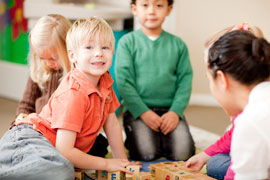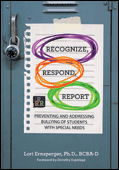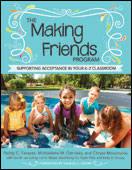Bullying prevention starts with the adults
Children take their cues from the grown-ups
Children with disabilities
Training is essential in helping school personnel recognize the different forms of bullying that may be directed at students with disabilities and the unique vulnerabilities these students have to social isolation, manipulation, conditional friendships, and exploitative behaviors.
—U.S. Department of Education, 2013
Information and resources
Read a poignant personal account about The Silence of Others by the author of Recognize, Respond, and Report.
See also “Abuse of Power: Most bullying prevention is aimed at students. What happens when adults are the aggressors?” and the free toolkit provided by Teaching Tolerance.
Try these student surveys
Have your students complete The Five-Question Student Survey and the Student Survey of Classroom Environment from Supporting Students with Emotional and Behavioral Problems.
Read also the chapter on “Enhancing Student Connectedness to School from that same guide.
What can you learn?
Take a look at the similarities and differences across the responses of four people who described their early perceptions about diversity in terms of disability, race/ethnicity, language, and family structure.

 Staff members may have inadequate training for spotting and acting on bullying, or they may even model it themselves
Staff members may have inadequate training for spotting and acting on bullying, or they may even model it themselves Learn more about how teachers and staff may contribute to a culture of bullying in the book
Learn more about how teachers and staff may contribute to a culture of bullying in the book 

